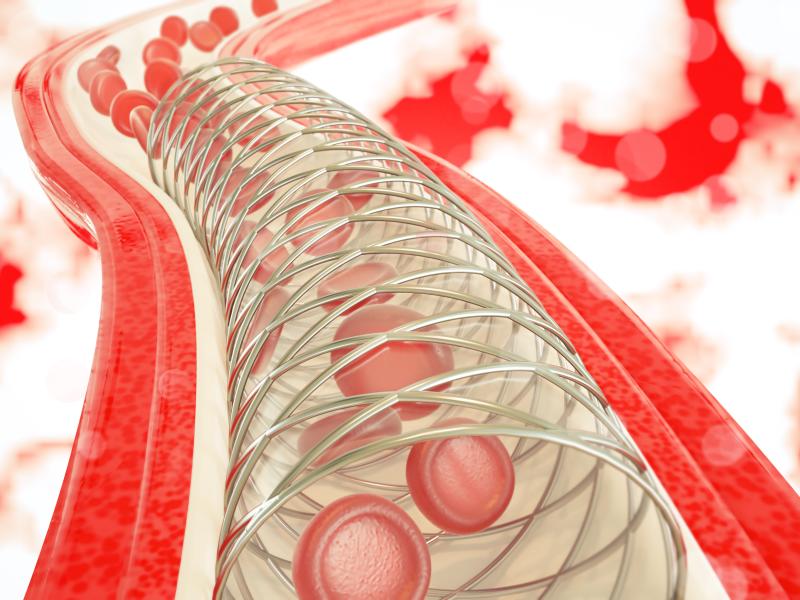
Bioresorbable vascular scaffolds (BVSs) and everolimus-eluting stents (EESs) show similar performance in patients with long native coronary artery disease, a recent study has found.
A total of 341 patients with diffuse long lesions were randomly assigned to receive either BVS (n=171) or EES (n=170) implants. Participants were scheduled to be followed up for 12 months, during which the development of major adverse cardiovascular events (MACEs)―such as cardiac deaths, myocardial infarction, device thrombosis and ischaemia-driven target-lesion revascularization―was observed.
The mean lesion length was 32.2±13.1 mm in the BVS arm and 35.3±13.0 mm in the EES arm. All enrolled patients needed a device that was at least 28 mm in length.
A total of 332 patients (97.4 percent) were able to finish clinical follow-up at 12 months. In these patients, the primary composite endpoint of MACEs occurred in two participants in the BVS arm and in four patients in the EES arm. The resulting incidence rates were 1.2 percent and 2.4 percent.
This led to a statistically similar risk estimate between treatment groups (hazard ratio, 0.49, 95 percent confidence interval, 0.09–2.67; p=0.398). This trend remained true even in the individual components of MACE. In particular, only one patient from each group experienced device thrombosis.
However, the researchers pointed out that because the manufacturer stopped supplying BVS, recruitment for the trial had to be terminated early. “Therefore, this report provides descriptive information on endpoint events without formal hypothesis testing,” and the results cannot be considered clinically relevant.